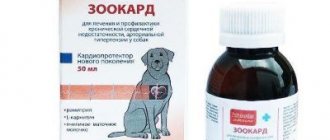Sometimes dog breeders encounter problems with their pets such as coughing. Dogs, like people, cough for a variety of reasons. A dog’s cough can be foamy, dry or wet, whistling or occurring when lying down, in a certain season, and so on. It is important to understand why a dog coughs and vomits white foam , and for this you need to become familiar with the types of coughs and their origins. Remember that it is important to contact a veterinarian without delaying the visit.
Symptoms accompanying cough
Coughing in dogs is not usually the only symptom; other signs of developing diseases may also be seen. Pay attention to these accompanying signs
:
- does the dog have nasal discharge?
- redness of the conjunctiva of the eyes or discharge from them;
- whether foam comes out of the mouth when coughing;
- whether the dog is losing appetite and weight;
- whether she became lethargic and depressed;
- whether cough, shortness of breath and wheezing appear when breathing after physical activity;
- Is the dog sneezing?
- how often she breathes at rest;
- Is there any coughing or vomiting?
These observations will later help the veterinarian clarify the diagnosis, since, we repeat, there are quite a few reasons for the occurrence of this symptom.
How to Help Your Dog Before Visiting the Vet
You need to be extremely careful when providing first aid for a cough, since until the exact cause of convulsive spasms is determined, any measures, and especially medications, can harm the pet and only worsen the situation.
If we are talking about a single attack, and there is every reason to believe that the dog is simply choking, first aid should be aimed at preventing suffocation.
There are several ways to do this:
- Take the animal in your hands and turn it upside down, then shake it very carefully.
- Holding the dog in your hands so that its head is below the body (the hind legs can be raised), pat the pet on the back between the shoulder blades.
- Gently stroke the animal's throat to relax the spasming muscles.
- Pinch the dog's nostrils, forcing the pet to take a deep breath.
- While holding the animal in a standing position, lift the back of the animal’s body up, and then make several gentle blows to the chest.
- For brachycephalic (short-faced) dog breeds, you can open the mouth and, holding the tongue with your finger, make sure that there is an opening in the airways, as well as the absence of a foreign body in them that caused a coughing attack.
If attacks of convulsive coughing with foam and vomiting recur, the animal must be immediately shown to a veterinarian.
Reasons why a dog coughs and spits up white foam
Not only a cold can cause a dog to cough, as many breeders think, but also some serious diseases :
- adenovirus or kennel cough;
- allergy;
- heart disease;
- neoplasm in the lungs;
- tracheal collapse;
- helminthic infestations;
- diseases of gums and teeth;
- tonsillitis;
- anatomical features (short jaw).
The most common types of cough will be discussed below.
Viral cough in dogs
A dog's cough with white foam most likely indicates a viral origin of the disease, the so-called infectious tracheobronchitis, or kennel cough. It often flares up in places where dogs are crowded, in groups, in places of mass walking and at exhibitions. Can cause illness
various pathogens: parainfluenza virus, canine distemper virus, adenovirus, reoviruses and others.
At first, the dog tries to clear his throat, as if he was choking on something , later the cough may come with vomiting . The disease is dangerous primarily for puppies and dogs with weak immunity, especially if there is a secondary bacterial infection that causes pneumonia.
Symptoms of infectious tracheobronchitis in dogs:
- cough due to inflammation of the trachea - dry and frequent:
- swollen tonsils;
- change in behavior to lethargic and passive, refusal to eat;
- When coughing, your dog may regurgitate white foam.
When diagnosing infectious tracheobronchitis in a dog, you will need to take swabs from the nose and pharynx, blood for the level of specific antibodies, and undergo an X-ray of the respiratory tract.
Immunostimulants, antibiotics, expectorants, and medicinal inhalations are used for treatment. The prognosis for recovery is favorable, animals recover completely within two weeks, unless tracheobronchitis is complicated by pneumonia.
A number of diseases
It is possible to establish the exact cause of vomiting from previously studied information about the diseases they have suffered.
Typical diseases include:
- intoxication of various origins;
- intestinal obstruction;
- a foreign body that has entered the gastrointestinal tract;
- pancreatitis and colitis;
- diseases of the central nervous system;
- traumatic brain injuries;
- hydrocephalic syndrome;
- brain tumors;
- oncological diseases;
- hepatitis, plague, enteritis;
- intestinal volvulus;
- Lentospirosis and helminthiases;
- coronavirus infection.
The above is a partial list of diseases that cause vomiting. A manifestation of gastritis can be frequent periodic vomiting of white mucus. Violation of the diet and food composition sometimes causes gastritis. Frequent vomiting is a clear sign of intestinal obstruction, severe intoxication, or indicates a foreign object in the pet’s stomach. For an accurate diagnosis, veterinarians advise recording how many times, in what volume and what the dog vomited.
Damage to the brain and central nervous system causes vomiting. Traumatic brain injuries, hydrocephalus, brain tumors, heat and sunstroke, and seasickness become causes of vomiting. Impaired liver function, kidney function, parasitic diseases, drug overdose are added to the above reasons.
>Video
Foreign bodies and injuries as causes of cough
If the dog coughs, wheezes , trying to cough up, and blood may appear, then he may have swallowed a foreign object, as sometimes happens in dogs and cats. This is how a dog may cough due to collar asphyxia , an inability to breathe normally due to a tumor or fluid in the lungs. This condition requires immediate attention to a veterinarian
.
- Characteristic signs of a foreign body and injury as the reasons why a dog coughs and vomits white foam:
- the dog is trying to burp something
- Possible vomiting in the dog, foam mixed with blood
- dry wheezing when breathing due to narrowing of the lumen of the trachea or bronchi
- refusal of food and drink
- foamy mucus from nasal passages
If such symptoms appear, a doctor should be called to see the animal as soon as possible.
Cough as a symptom of allergies in dogs
It happens that in dogs, cough , like in people, occurs as a reaction to allergens - pollen, chemical compounds, dust, cigarette smoke, food additives in food, etc. Then accompanying symptoms
: sneezing, red eyes, watery eyes, cyanosis of the mouth, and skin rashes. Treatment is prescribed by a veterinarian after making a diagnosis and determining the causes of allergic reactions in the animal.
Danger signs
The most alarming sign indicating the progression of a serious illness is excessive salivation. The dog whines and, unable to find a place for himself, constantly walks around the room. There is a loud rumbling in the stomach. This symptom is combined with belching.
Rapid weight loss in a dog signals an infectious disease.
- The combination of vomiting, fever and diarrhea signals the development of an infectious disease. The animal rapidly loses weight, becomes lethargic and drowsy. The temperature rises, the nose remains dry and hot. Eyes may water.
- The development of kidney failure is indicated by the appearance of an unpleasant odor from the mouth. A clear sign indicating the progression of this disease is the “aroma” of ammonia.
- If a sweetish odor appears from the mouth, this indicates that the animal is suffering from diabetes. A putrid “aroma” signals problems with the intestines.
- When gastritis develops, the dog vomits in the first half of the day, approximately 2-3 hours after eating.
What is the danger?
Prolonged vomiting of white foam leads to dehydration of the animal's body. In this case, the water-electrolyte balance is disrupted. In the absence of veterinary care, this leads to the death of the dog. This is especially dangerous for puppies.
Prolonged vomiting is especially bad for puppies.
The constant release of foam leads to the body being unable to properly absorb nutrients. Energy reserves are gradually depleted, which negates the likelihood of a speedy recovery.
The dog is coughing and vomiting white foam, possibly due to helminthic infestations
If an animal suffers from coughing, wheezing with regurgitation of white foam , then infection with parasites is possible. Some types of worms can migrate throughout the body, including living in the lungs, heart, esophagus, and stomach of the host. In addition to coughing, there are digestive disorders (poor appetite, vomiting, constipation), lethargy, dull hair, mucus and blood in the feces. Dirofilariasis, toxocariasis, ascariasis, and infection with esophageal worms are especially dangerous. Therefore, it is so important to promptly diagnose and treat helminthic diseases, and even better, to prevent them through quarterly deworming of your pet.
What does the color and nature of vomit indicate?
White mucous discharge is often not a cause for concern. They appear during a protective reflex and help cleanse the body of hair, excess food, and foreign objects. Such vomiting is one-time in nature and does not leave any unpleasant consequences for the dog. There is no need to worry if a nursing bitch regurgitates leftover food. This reflex is due to maternal instinct: in this way, the mother feeds the babies when they grow up or when there is a lack of milk. Serious mechanical damage or a pathological process is indicated by yellow (bilious) discharge, gray or dark mucous, and bloody. Such symptoms cannot be ignored; the help of a specialist is required.
Causes of "heart" cough in dogs
May occur in older dogs due to deformation of the mitral valve. The heart increases in size to compensate for the lack of circulation. Stagnant processes in the pulmonary circulation cause fluid accumulation in the lungs. This leads to compression of the trachea and a “heart cough.”
- Associated symptoms with “heart cough” in dogs:
- the dog coughs dully from inside
- decreased animal activity
- there are signs of ascites (fluid accumulation in the abdominal cavity
- Over time, coughing becomes more frequent and intense
- the oral mucosa may be bluish
Heart diseases, unfortunately, are rarely cured completely; the doctor’s task is to select a treatment that will improve heart function, and thereby stop coughing attacks in a dog
.
What to do
Before getting help from a specialist, you need to take the following steps:
- Free the dog from interfering objects;
- Do not give food or water for 3 hours;
- Monitor the condition of the animal.
If the animal is wearing a collar or muzzle, they must be removed. Otherwise, the dog will choke and begin to choke.
After an attack, do not give your dog food or water. Wait 3-4 hours. Then start giving water in small doses every 20 minutes. Food is not given during the day.
Monitor your pet's condition. Prepare information for your veterinarian. Tell us how many attacks there were, under what circumstances, what the vomit looked like, and the presence of additional symptoms.
Prohibited actions
In order not to harm your dog, you need to know about the actions that you should not do. Otherwise, complications and death are possible.
If your dog is vomiting, do not:
- Choose your own dosage of specialized medications. Only a doctor can make a prescription. Treatment in this case is not effective and even dangerous. Without knowing the exact diagnosis, it is easy to harm the animal’s internal organs.
- Antiemetics with human formulations cannot be given. The medicine is not intended for your pet and will make the situation worse. It is better to ensure rest, drinking regime and consult a doctor.
- There is no need to scold or punish your dog, even if it vomits in the room or on the bed. The animal needs moral support. Seizures are difficult to control, so the pet is not aware of its actions.
- There should be no collar, leash, or muzzle while vomiting. The animal can suffocate and die. The airways should be as clear as possible. For decorative breeds, tight clothing and hair clips should be removed.
- In case of poisoning, it is important that all toxins leave the body. Therefore, they try not to use antiemetic drugs right away. You need to give it time and not hold back the urge.
A pet undergoing home treatment should not be left unattended. Convulsions and loss of consciousness are possible. In this state, the dog can harm itself. You need to monitor his behavior and, if necessary, contact a specialist.











